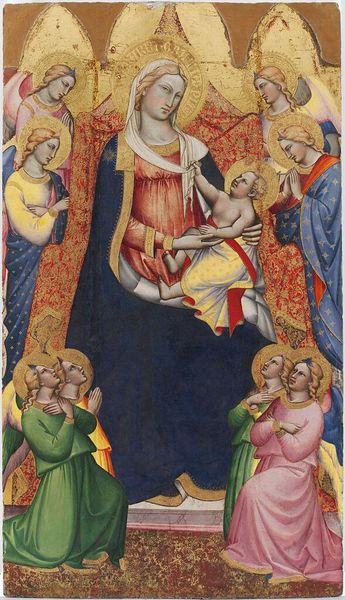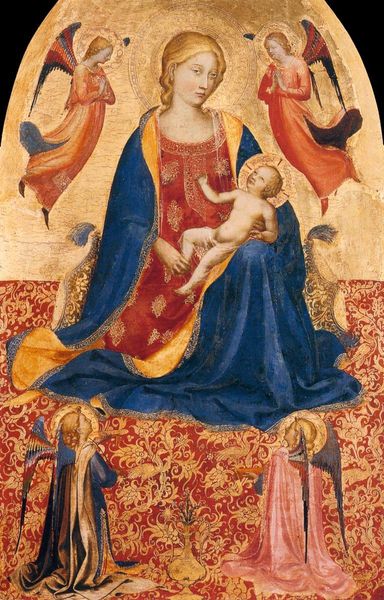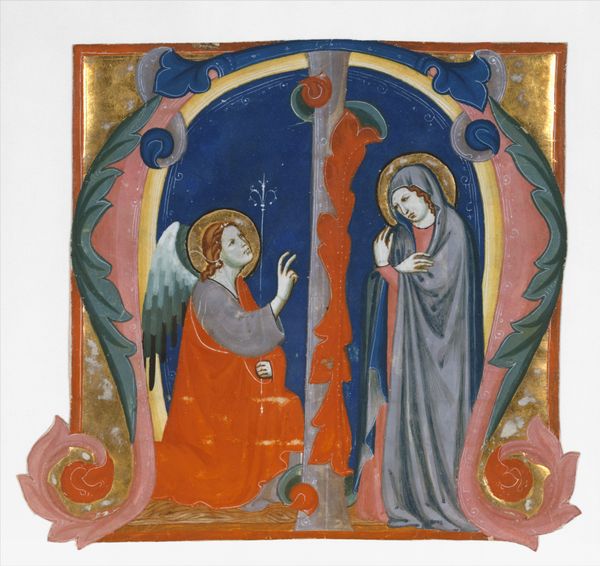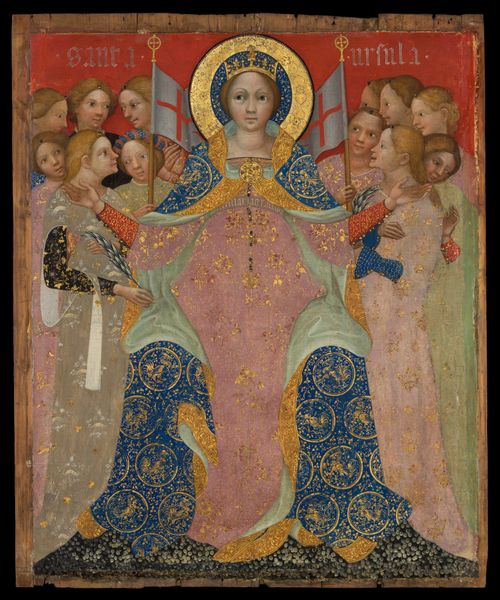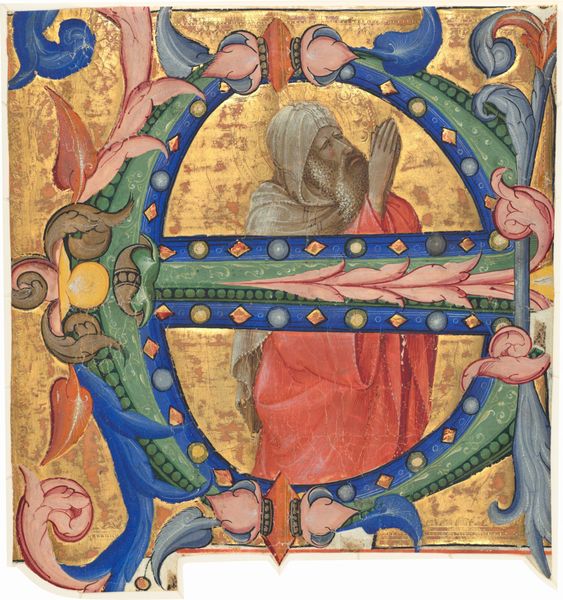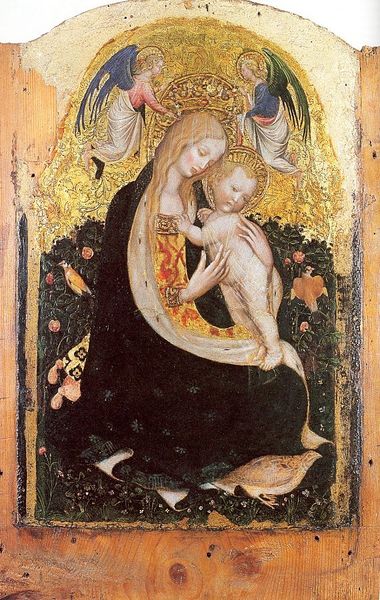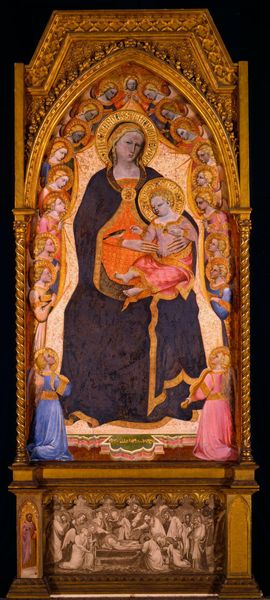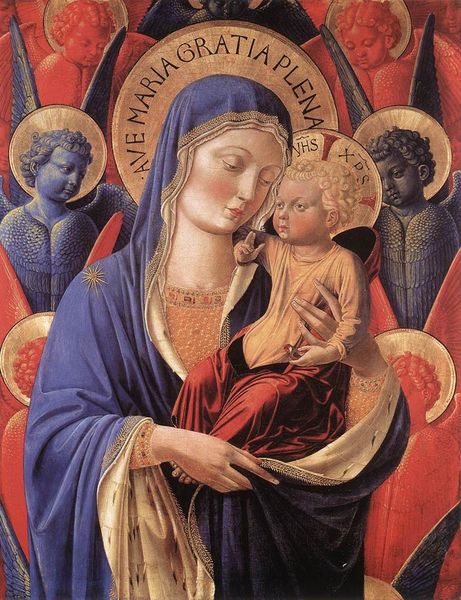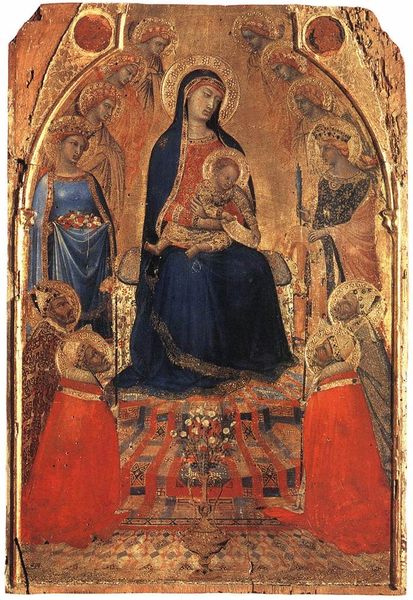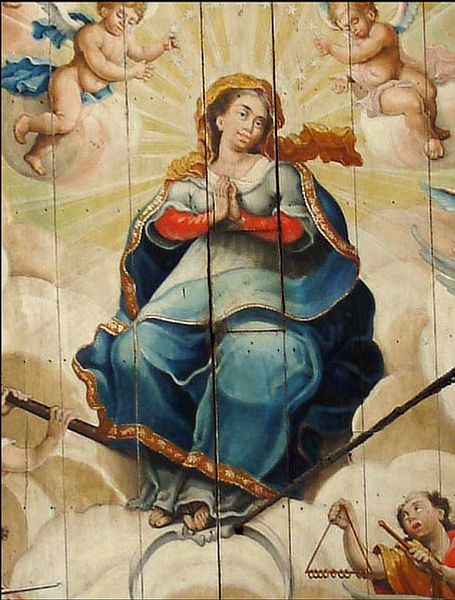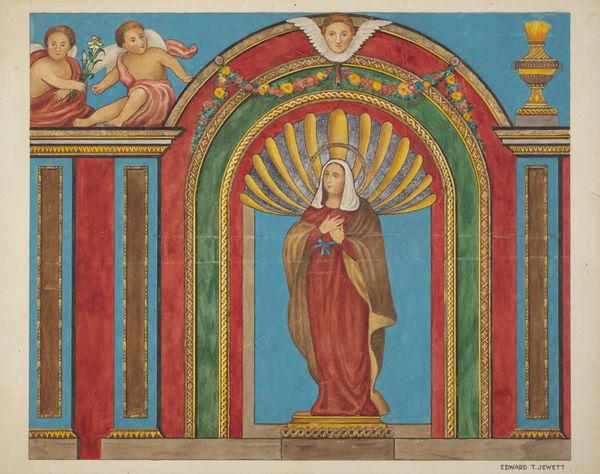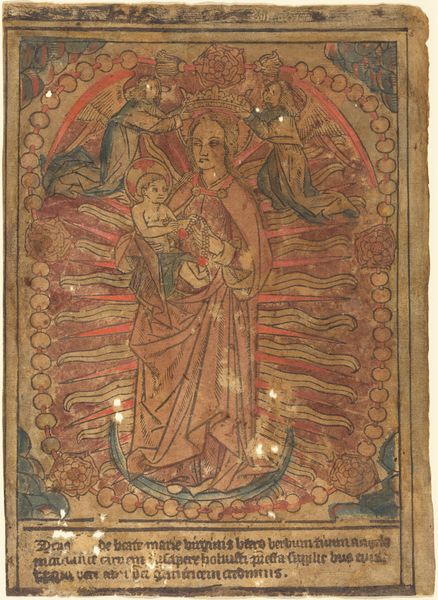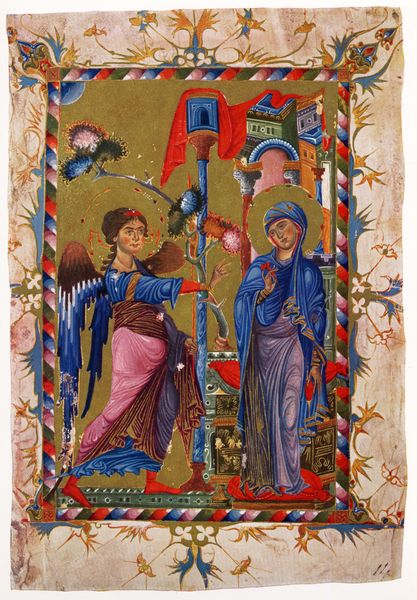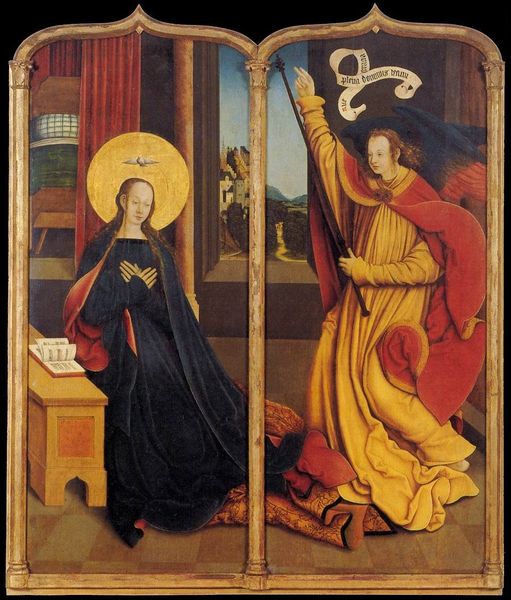
tempera, painting
#
portrait
#
medieval
#
tempera
#
painting
#
figuration
#
form
#
christianity
#
painting art
#
early-renaissance
#
virgin-mary
#
miniature
#
christ
Dimensions: 47.5 x 35 cm
Copyright: Public domain
Curator: What an exquisite illumination! We’re looking at Fra Angelico’s "Madonna of Mercy with Kneeling Friars," created around 1424. The artist worked in tempera. Notice how Mary is framed within the initial "S," almost embraced by it. What’s your immediate take? Editor: My initial impression is its arresting balance of authority and vulnerability. Mary’s stature is imposing, sheltering those figures beneath her mantle, yet her downcast gaze seems to communicate both resignation and grace. There’s a tension between power and submission that feels very revealing. Curator: Absolutely. The symbolism of the protective mantle, known as the "Virgin of Mercy," is a powerful visual trope deeply rooted in medieval society. She literally shields these friars, offering divine protection in a dangerous world. It’s a visual prayer. The 'S' itself echoes continuity and connection, framing the Virgin Mary in perpetual compassion. Editor: The kneeling friars also catch my eye. Note their relative smallness in comparison to the Virgin; it's representative of their subservience, both literally in their kneeling posture, and metaphorically in the larger religious hierarchy of the time. Is it me or their supplicating hands feel deeply gendered in how they request blessings? Curator: That is a perceptive point. Hand gestures are incredibly important. These upward-reaching hands signify piety, but it’s also about acknowledging the intercession of the Virgin Mary as central to their relationship with the divine. She embodies both motherhood and spiritual authority. The color blue, so predominant, is also heavily symbolic for its association with Mary and purity. Editor: Indeed. Beyond that, I feel like the opulence almost works as a smokescreen; after all, this image served to reaffirm specific power dynamics between the church, the friars and its believers through religious symbols, and to provide access through prayer and devotion to the mercy of the virgin. Curator: These miniatures invite contemplation and reverence. To behold this piece is a brief interaction with a time, now long gone, in which such an artistic expression provided real consolation, faith and meaning for all of society, irrespective of background. Editor: Precisely. Analyzing these images from different perspectives reveals complex interactions between faith, gender, and the social function of visual representation. It invites all of us to consider the multilayered meanings embedded within art and the impact it had then as much as today.
Comments
No comments
Be the first to comment and join the conversation on the ultimate creative platform.
